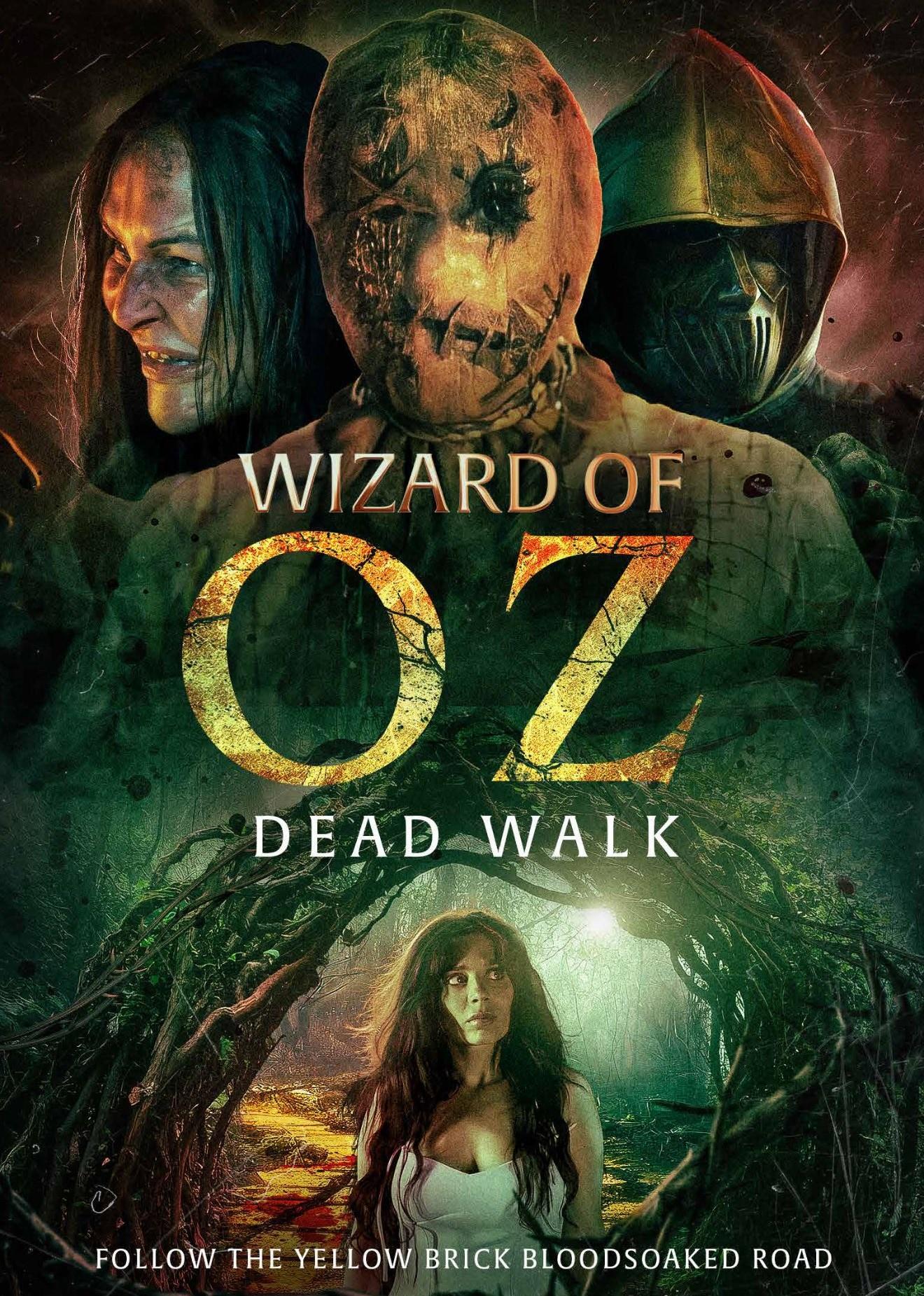Some dreams are too dangerous to wake again. The Wizard of Oz: The Dead Walk resurrects one of cinema’s most beloved fantasies and turns it into a gothic fever dream — a horrifying reimagining where magic rots, innocence curdles, and the yellow brick road leads straight to ruin. This isn’t the Oz we remember; it’s the one our nightmares always warned us about.

The story begins decades after Dorothy Gale’s fabled return to Kansas. She’s older now, world-weary, and quietly obsessed with the world she left behind. Haunted by guilt and grief, she believes she can use the remnants of her ruby slippers to restore what time has taken from Oz. But when she performs a forbidden ritual under a blood-red moon, she doesn’t bring back the land she loved — she unleashes the dead that guarded it.
Director Osgood Perkins (Longlegs, Gretel & Hansel) paints Oz in hues of decay and dread. The Emerald City is tarnished brass and bone; Munchkinland lies silent under creeping vines; the yellow brick road cracks like dried veins through the wilderness. Every frame feels both mythic and diseased — a fairy tale infected by rot. His camera lingers where beauty and horror overlap, turning the familiar into something deeply wrong.
Dorothy, played with haunting restraint by Florence Pugh, is a revelation. Her innocence has turned brittle, her optimism drowned by regret. The girl who once sang of rainbows now whispers spells in the dark, desperate to undo her own legend. Pugh embodies the tragedy of belief — someone who wanted to save the world and instead doomed it.
The returning companions are nightmares of nostalgia. The Tin Man (Javier Bardem, in a chillingly physical performance) leaks oil that runs black and sticky like blood. His voice grinds like rusted machinery as he hunts for hearts to replace the one that failed him. The Scarecrow (Bill Skarsgård) is worse — a patchwork revenant with a smile sewn too wide, his straw dripping with the blood of what he’s consumed. Even the Cowardly Lion (Andy Serkis in stunning motion capture) prowls as a tragic beast, ashamed of what courage has made him do.
The film’s horror is operatic yet intimate. Every encounter drips with metaphor — Dorothy facing her creations as reflections of her broken psyche. When she walks the ruined road, ruby shards embedded in her shoes, the audience feels the full weight of her curse. She isn’t just fighting monsters — she’s fighting the consequences of trying to play god.
The score by Colin Stetson turns the familiar “Somewhere Over the Rainbow” into a dirge — strings stretched to breaking, voices echoing like trapped ghosts. It’s not nostalgia; it’s a requiem for wonder.
As Dorothy and her allies — a rebel witch named Astra (Anya Taylor-Joy) and a reluctant soldier from the Emerald Guard (Aaron Taylor-Johnson) — battle through the corpse of Oz, the film evolves into something more mythic. Each realm they cross is a twisted echo of the past: the Poppy Fields bloom with poison, the Emerald Palace pulses like a living heart, and the Wizard’s old throne now serves as a gateway to oblivion.

The climax is pure dark poetry. Dorothy stands before the hollow remains of the Wizard’s machine, her companions closing in — dead eyes filled with the memories she gave them. “You asked us to live,” the Scarecrow croaks. “Now we can’t stop.” Her final act — using her own heart to power a spell that undoes the resurrection — is both redemption and damnation. The screen floods with crimson light as the magic collapses, taking Dorothy with it.
The final image is unforgettable: Kansas, dawn breaking. A single red shoe washed up in a puddle, glinting beneath gray skies. The magic is gone — but its curse lingers.
💬 Film Verdict:
⭐ 9.3/10 — A masterpiece of dark reimagination. “The Wizard of Oz: The Dead Walk” fuses horror and fantasy with eerie elegance — a story of love, guilt, and the danger of believing too hard in magic. Be careful what you wish back to life. 🩸🌪️




